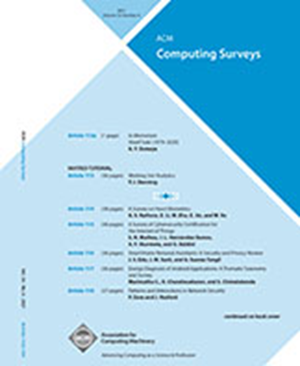全面分析用于恶意软件猎杀的可解释人工智能
IF 23.8
1区 计算机科学
Q1 COMPUTER SCIENCE, THEORY & METHODS
引用次数: 0
摘要
在过去十年中,恶意软件变种的数量迅速增加。许多研究人员提出使用机器学习(ML)和深度学习(DL)等智能技术来检测恶意软件,这些技术具有很高的准确性和精确度。然而,这些方法都存在决策过程不透明的问题。因此,我们需要基于人工智能(AI)的模型具有可解释性、可解读性和透明性,这样才可靠可信。在本调查中,我们回顾了与可解释人工智能(XAI)相关的文章,以及它们在恶意软件检测这一重要领域的应用。文章全面考察了恶意软件分析中采用的各种 XAI 算法。此外,我们还探讨了标准 XAI 方法无法满足的恶意软件分析的特点、挑战和要求。我们讨论了即使可解释恶意软件检测(EMD)模型提供了可解释性,它们也会使基于人工智能的模型更容易受到对抗性攻击。我们还提出了一个框架,根据每种方法所涉及的安全功能,为每种 XAI 恶意软件分析模型分配一个可解释性级别。总之,拟议项目的重点是将 XAI 与恶意软件分析相结合,将 XAI 模型用于审查人工智能系统的不透明性及其在恶意软件分析中的应用。本文章由计算机程序翻译,如有差异,请以英文原文为准。
A Comprehensive Analysis of Explainable AI for Malware Hunting
In the past decade, the number of malware variants has increased rapidly. Many researchers have proposed to detect malware using intelligent techniques, such as Machine Learning (ML) and Deep Learning (DL), which have high accuracy and precision. These methods, however, suffer from being opaque in the decision-making process. Therefore, we need Artificial Intelligence (AI)-based models to be explainable, interpretable, and transparent to be reliable and trustworthy. In this survey, we reviewed articles related to Explainable AI (XAI) and their application to the significant scope of malware detection. The article encompasses a comprehensive examination of various XAI algorithms employed in malware analysis. Moreover, we have addressed the characteristics, challenges, and requirements in malware analysis that cannot be accommodated by standard XAI methods. We discussed that even though Explainable Malware Detection (EMD) models provide explainability, they make an AI-based model more vulnerable to adversarial attacks. We also propose a framework that assigns a level of explainability to each XAI malware analysis model, based on the security features involved in each method. In summary, the proposed project focuses on combining XAI and malware analysis to apply XAI models for scrutinizing the opaque nature of AI systems and their applications to malware analysis.
求助全文
通过发布文献求助,成功后即可免费获取论文全文。
去求助
来源期刊

ACM Computing Surveys
工程技术-计算机:理论方法
CiteScore
33.20
自引率
0.60%
发文量
372
审稿时长
12 months
期刊介绍:
ACM Computing Surveys is an academic journal that focuses on publishing surveys and tutorials on various areas of computing research and practice. The journal aims to provide comprehensive and easily understandable articles that guide readers through the literature and help them understand topics outside their specialties. In terms of impact, CSUR has a high reputation with a 2022 Impact Factor of 16.6. It is ranked 3rd out of 111 journals in the field of Computer Science Theory & Methods.
ACM Computing Surveys is indexed and abstracted in various services, including AI2 Semantic Scholar, Baidu, Clarivate/ISI: JCR, CNKI, DeepDyve, DTU, EBSCO: EDS/HOST, and IET Inspec, among others.
 求助内容:
求助内容: 应助结果提醒方式:
应助结果提醒方式:


